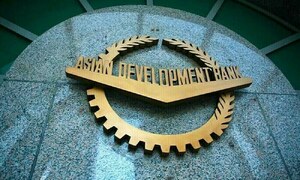Asia will be the driving force behind biotech crops in the next 10 years, despite China's hesitancy about approving gene-modified rice, a Chinese scientist and an international body said on Monday.
In 2006, the first year of the second decade of biotech crops, India replaced China as the world's top grower of genetically modified (GMO) cotton, the pro-biotech International Service for the Acquisition of Agri-biotech Applications (ISAAA) said.
"The second decade will likely feature strong growth in Asia led by China, India and new countries like Pakistan and Vietnam," it said in a report. "The first decade (1996-2005) was the decade of the Americans."
ISAAA said India, which planted Bt cotton for the first time in 2002, had tripled its area of insect-resistant Bt cotton in 2006 to 3.8 million hectares, versus China's 3.5 million ha.
Jikun Huang, a scientist with the Chinese Academy of Sciences, noted a fall in China's cotton area as Beijing encouraged farmers to grow more grains due to the country's food security concerns in recent years.
But Huang said favourable weather helped China boost its 2006 cotton output by 17.8 percent to 6.73 million tonnes. More than 60 percent of Chinese cotton was Bt cotton. "The biotechnology has helped farmers reduce cost and raise production on limited land," said Huang, a Chinese scientist known for promoting biotechnology.
Bt cotton increased the incomes of some 6.8 million farmers as it cut pesticide use by 60 percent, while raising yields by 10 percent compared with conventional varieties, Huang said.
GMO RICE, RAPESEED But Huang said Beijing remained opposed to GMO rice. "We still hope GMO rice could also be approved for production in the next two to three years," said Huang, adding Beijing was reluctant to give the go-ahead for social and political reasons.
Though Beijing looked close to approving GMO rice in early 2005, it stopped short of such a move following reports that transgenic rice was traded illegally in China.
As Beijing was eager to develop biofuel to reduce its reliance on imported oil, rapeseed could be the next farm product approved by Beijing for commercial production after it had approved the production of GMO papura in 2006, Huang said. China also planned to raise its budget for biotechnology after spending about 2 billion yuan a year, mainly on research into GMO rice, said Huang.
BR100
15,085
Increased By
112.5 (0.75%)
BR30
44,012
Increased By
987.7 (2.3%)
KSE100
148,618
Increased By
1274.3 (0.86%)
KSE30
45,248
Increased By
370.7 (0.83%)





















Comments
Comments are closed.